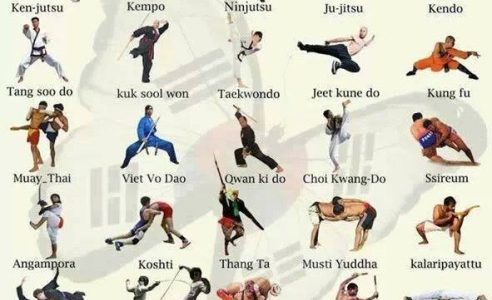Standard Martial Arts Vs. Modern Combat Sports: Understanding The Secret Distinctions
Standard Martial Arts Vs. Modern Combat Sports: Understanding The Secret Distinctions
Blog Article
Short Article Produced By-Valentine Hovgaard
When you consider martial arts, do you lean much more toward the conventional methods or the modern fight sports? Each course supplies one-of-a-kind benefits and experiences, formed by their approaches and training techniques. Conventional martial arts highlight personal growth and self-control, while modern-day combat sports focus on competitors and efficiency. Comprehending these distinctions can lead you in selecting the right method for your trip. Yet exactly how do these differences show up in training and viewpoint?
The Ideology and History Behind Typical Martial arts
While many people associate martial arts with physical battle, the philosophy and background behind standard martial arts run much deeper. You'll discover that these disciplines emphasize personal growth, self-control, and respect.
Originating from ancient practices, traditional martial arts were usually developed for Self-Defense and spiritual development. They personify concepts such as balance, harmony, and self-discipline, directing practitioners beyond mere fighting abilities.
As you educate, you'll not just learn methods yet also gain understandings right into the society and values that formed these arts. The rituals and traditions, usually passed down via generations, foster a feeling of community and belonging.
The Competitive Nature of Modern Combat Sports
Modern battle sports have transformed the landscape of martial arts right into a very affordable arena, where professional athletes face off in an examination of skill, method, and endurance.
https://patch.com/new-jersey/bridgewater/freedom-martial-arts-moves-larger-location-bridgewater 'll notice that competitors are commonly arranged with strict rules and policies, ensuring fair game and security. These events attract big target markets, fueling the exhilaration and intensity of matches.
Professional athletes train carefully, not just for physical expertise but additionally for psychological strength, understanding that every information counts in the ring. The adrenaline rush throughout competitions is apparent, as boxers push their limitations to assert victory.
Followers appreciate the athleticism and artistry included, making modern-day combat sporting activities a thrilling phenomenon that continues to advance and mesmerize lovers around the globe.
Training Methods and Strategies: A Comparative Evaluation
The affordable environment of contemporary battle sporting activities needs cutting-edge training methods that vary dramatically from typical martial arts.
In modern-day training, you'll concentrate on certain strategies, competing, and conditioning, commonly using drills that mimic actual battle scenarios. You'll see an emphasis on quantifiable performance and regular competitors to analyze your skills.
On the other hand, traditional martial arts focus on types, katas, and thoughtful trainings, typically stressing technique and respect over competition.
https://martial-arts-happy-kids88766.azzablog.com/35242087/recommendations-on-how-to-stop-injuries-during-rigorous-martial-arts-training is generally much less extreme and might include repeated practice as opposed to real-time sparring.
While both approaches construct ability and physical fitness, modern fight sporting activities offer a more vibrant and adaptable training atmosphere, preparing you for prompt obstacles in the ring or cage.
integrity martial arts that aligns with your objectives and rate of interests.
Final thought
In selecting in between typical martial arts and modern-day fight sporting activities, it really boils down to what you value a lot of. If you're trying to find individual growth, discipline, and a feeling of area, standard arts could be your finest fit. However if you grow on competition and real-time obstacles, modern combat sporting activities could be the method to go. Ultimately, both paths offer special benefits, so it's all about aligning your training with your personal objectives and passions.
